- Author Curtis Blomfield [email protected].
- Public 2023-12-16 20:44.
- Last modified 2025-01-23 17:01.
Blood is a type of connective tissue of humans and animals. It consists of three types of cells, which are also called blood cells. It also contains a large amount of liquid intercellular substance.
Blood cells are divided into three types: platelets, erythrocytes and leukocytes. Platelets take part in the process of blood clotting. Red blood cells are responsible for transporting oxygen throughout the body. And the function of leukocytes is to protect the human or animal body from harmful microorganisms.
What are white blood cells?
There are several varieties of them, each of which performs its own specific functions. So, leukocytes are divided into:
- granulocytes;
- agranulocytes.
What are granulocytes?
They are also called granular leukocytes. This group includes eosinophils, basophils and neutrophils. The former are capable of phagocytosis. They can capture microorganisms and then digest them. These cells are involved in inflammatory processes. They are also able to neutralize histamine, which is released by the body during allergies. Basophils contain a large amount of serotonin, leukotrienes, prostaglandins and histamine. They take part in the development of allergic reactionsimmediate type. Neutrophils, like eosinophils, are capable of phagocytosis. A large number of them are in the focus of inflammation.
Nongranular white blood cells
Monocytes and lymphocytes are types of agranular (non-granular) leukocytes. The former, like agranulocytes, are able to absorb foreign particles that have entered the body.
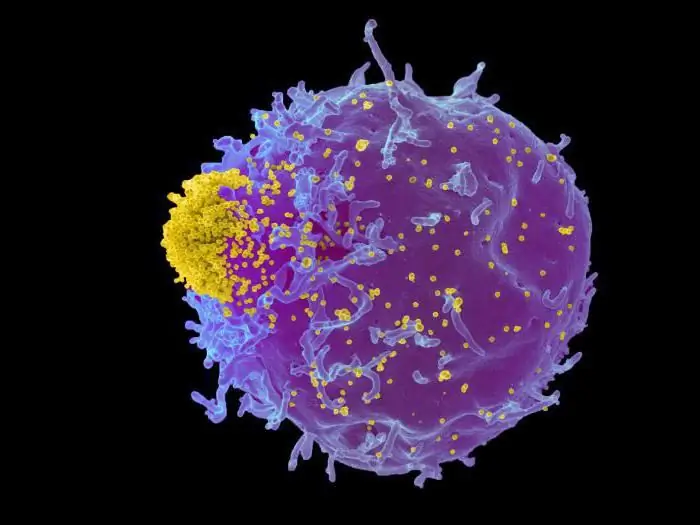
Lymphocytes are also part of the immune system of humans and animals. They are involved in the neutralization of pathogens that have entered the body. Let's talk about these cells in more detail.
Lymphocytes - what is it?
There are several varieties of these cells. We will look at them in more detail a little later.
It can be said that lymphocytes are the main cells of the immune system. They provide both cellular and humoral immunity.
Cellular immunity lies in the fact that lymphocytes are in direct contact with pathogens. Humoral, on the other hand, consists in the production of special antibodies - substances that neutralize microorganisms.
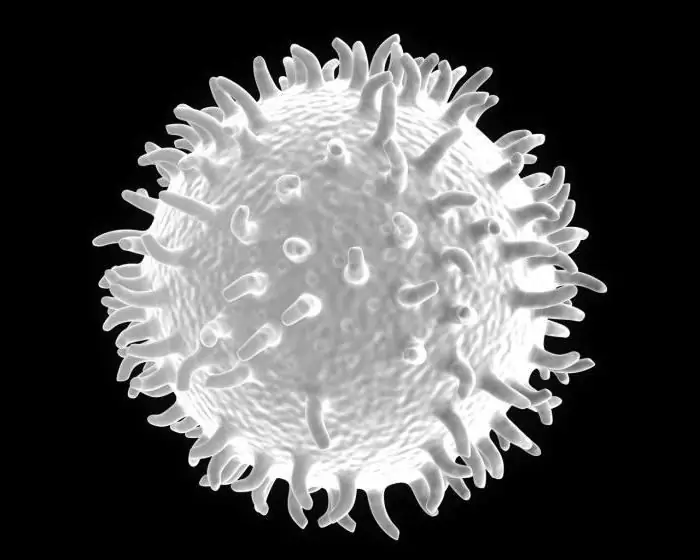
The level of lymphocytes in the blood depends on the amount of pathogenic bacteria or viruses in the body. The more of them, the more the body produces immune cells. Therefore, you probably already guessed what elevated lymphocytes in the blood mean. This means that a person in the body is now experiencing an acute or chronic form of an inflammatory disease.
Lymphocytes: what are their types?
Depending on their structure, they are divided into two groups:
- large granular lymphocytes;
- small lymphocytes.
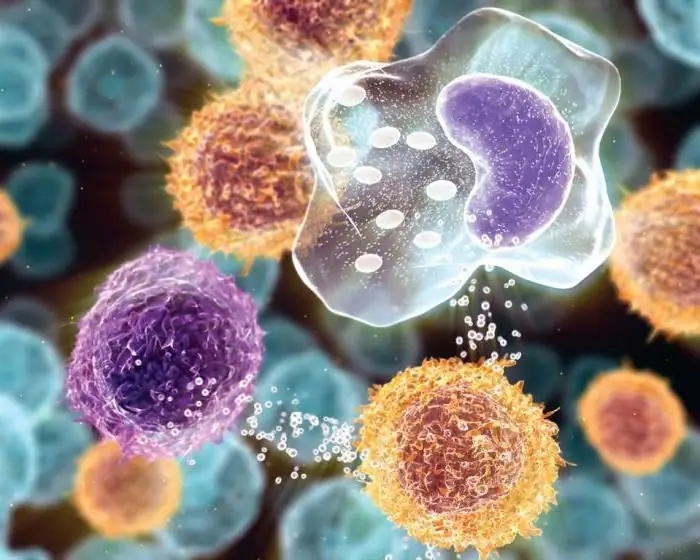
Also, lymphocyte cells are divided into groups, depending on the functions they perform. So, there are three varieties of them:
- B-lymphocytes;
- T-lymphocytes;
- NK lymphocytes.
The first are able to recognize foreign proteins and produce antibodies to them. An increased level of these cells in the blood is observed in diseases that are ill once (chickenpox, rubella, measles, etc.).
T-lymphocytes are of three types: T-killers, T-helpers and T-suppressors. The former destroy cells affected by viruses, as well as tumor cells. T-helpers stimulate the production of antibodies to pathogens. T-suppressors inhibit the production of antibodies when there is no longer a threat to the body. NK-lymphocytes are responsible for the quality of body cells. They are able to destroy those cells that are different from normal, such as cancer cells.
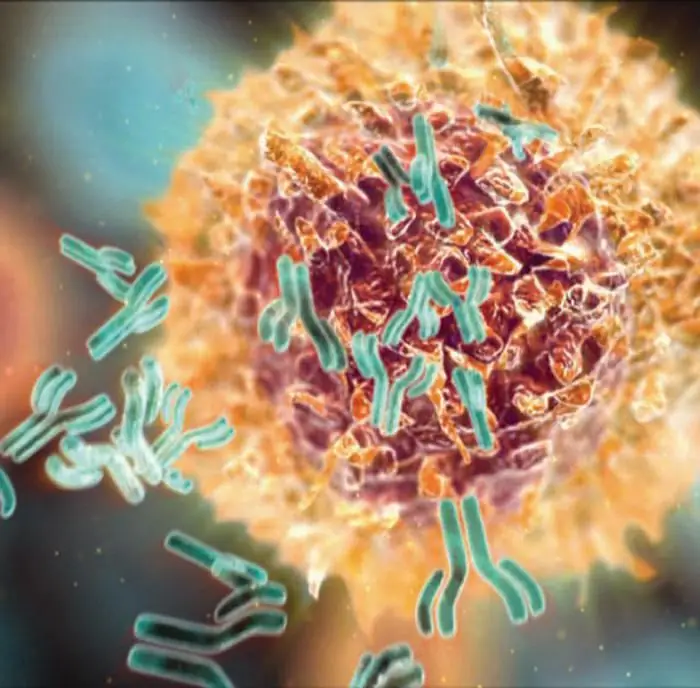
How do lymphocytes develop?
These cells, like other blood cells, are produced by the red bone marrow. They are formed from stem cells. The next important organ of the immune system is the thymus or thymus gland. Newly formed lymphocytes come here. Here they mature and are divided into groups. Also, some of the lymphocytes can mature in the spleen. Further, fully formed immunity cells can form lymph nodes - accumulations of lymphocytes along the lymphatic vessels. Nodules may enlarge during inflammatory processesin the body.
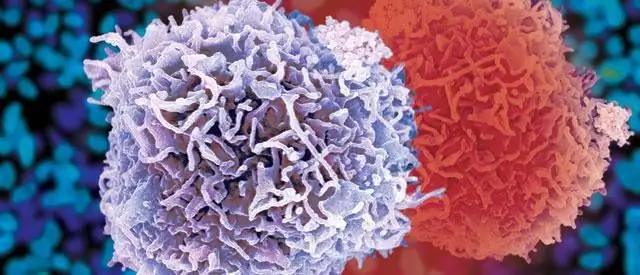
How many lymphocytes should be in the blood?
The allowable number of lymphocytes in the blood depends on age and on the condition of the body. Let's look at their normal level in the table.
| Age | Absolute white blood cell count (109/l) | Percentage of all white blood cells (%) |
| up to 1 year | 2-11 | 45-70 |
| 1-2 years | 3-9, 5 | 37-60 |
| 2-4 years | 2-8 | 33-50 |
| 5-10 years | 1, 5-6, 8 | 30-50 |
| 10-16 years old | 1, 2-5, 2 | 30-45 |
| 17 years and older | 1-4, 8 | 19-37 |
These indicators do not depend on gender: for women and men, the rate of lymphocytes in the blood is the same.
Indications for the study of the level of lymphocytes
To find out their amount in the blood, a complete blood count is used. It is assigned to children in the following cases:
- Prophylactic medical examination once a year.
- Medical examination of chronically ill children two or more times a year.
- He alth complaints.
- Protracted treatment for minor illnesses such as acute respiratory infections.
- Complications after viral diseases.
- To track the effectiveness of treatment.
- To assess the severity of certain diseases.
For adults, a complete blood count is indicated in such cases:
- Pre-employment medical examination.
- Prophylactic medical examination.
- Suspicion of anemia and other blood diseases.
- Diagnosis of inflammatory processes.
- Monitoring the effectiveness of treatment.
- Lymphocytes in the blood of women are very important to monitor during pregnancy, especially in the first and second trimesters.
Elevated lymphocytes
If their amount in the blood is higher than the specified norm, then this indicates a viral disease, some bacterial diseases such as tuberculosis, syphilis, typhoid fever, cancer, severe chemical poisoning. Lymphocytes are especially elevated in diseases to which strong immunity is developed. These are chickenpox, measles, rubella, mononucleosis, etc.
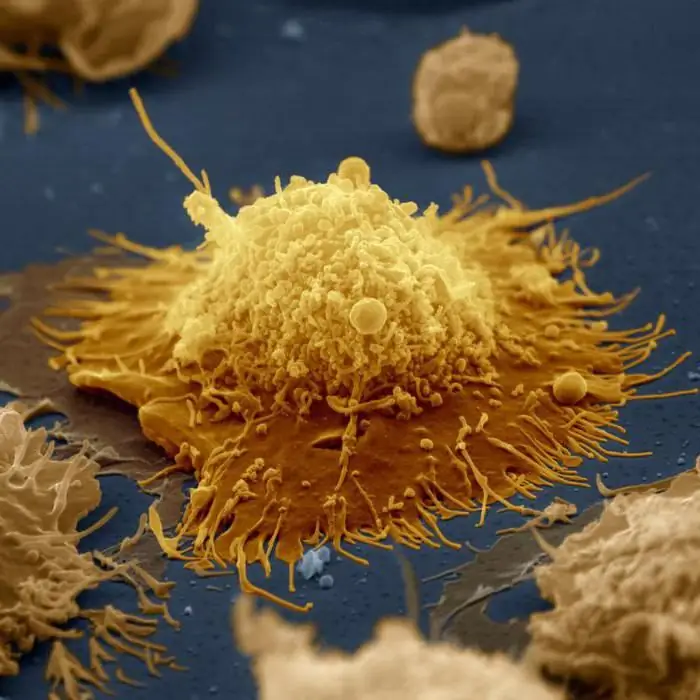
Decreased lymphocytes
Not enough of them in the blood is called lymphopenia. It occurs in such cases:
- viral diseases in the early stages;
- anemia;
- oncological diseases;
- chemotherapy and radiotherapy;
- corticosteroid treatment;
- lymphogranulomatosis;
- Itsenko-Cushing's disease.
How to prepare for a blood test?
There are several factors that can affect the number of lymphocytes in the blood. If you do not properly prepare for a blood test, it can give incorrect results. So, you need to follow the following rules.
- Do not lie down for a long time before donating blood for analysis. sharpa change in body position can affect the number of lymphocytes in the blood.
- Do not take a blood test immediately after medical procedures such as x-rays, massage, punctures, rectal examinations, physical therapy, etc.
- Do not take a blood test during and immediately after your period. The optimal time is 4-5 days after its completion.
- Don't worry about donating blood.
- Do not take a blood test immediately after exercise.
- It is best to donate blood for analysis in the morning.
If these rules are not followed, there is a high probability that the results of the analysis will be interpreted incorrectly and an incorrect diagnosis will be made. In such cases, a second blood test may be ordered for a more accurate diagnosis.






